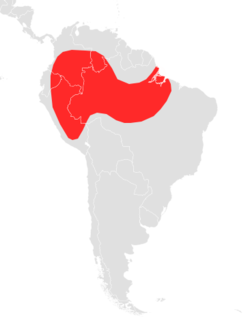| Fischer's little fruit bat | |
|---|---|
| Scientific classification | |
| Kingdom: | Animalia |
| Phylum: | Chordata |
| Class: | Mammalia |
| Order: | Chiroptera |
| Family: | Phyllostomidae |
| Genus: | Rhinophylla |
| Species: | R. fischerae |
| Binomial name | |
| Rhinophylla fischerae Carter, 1966 | |
 | |
Fischer's little fruit bat (Rhinophylla fischerae) is a bat species found in Brazil, Colombia, Ecuador, Peru and Venezuela. [1] [2]
